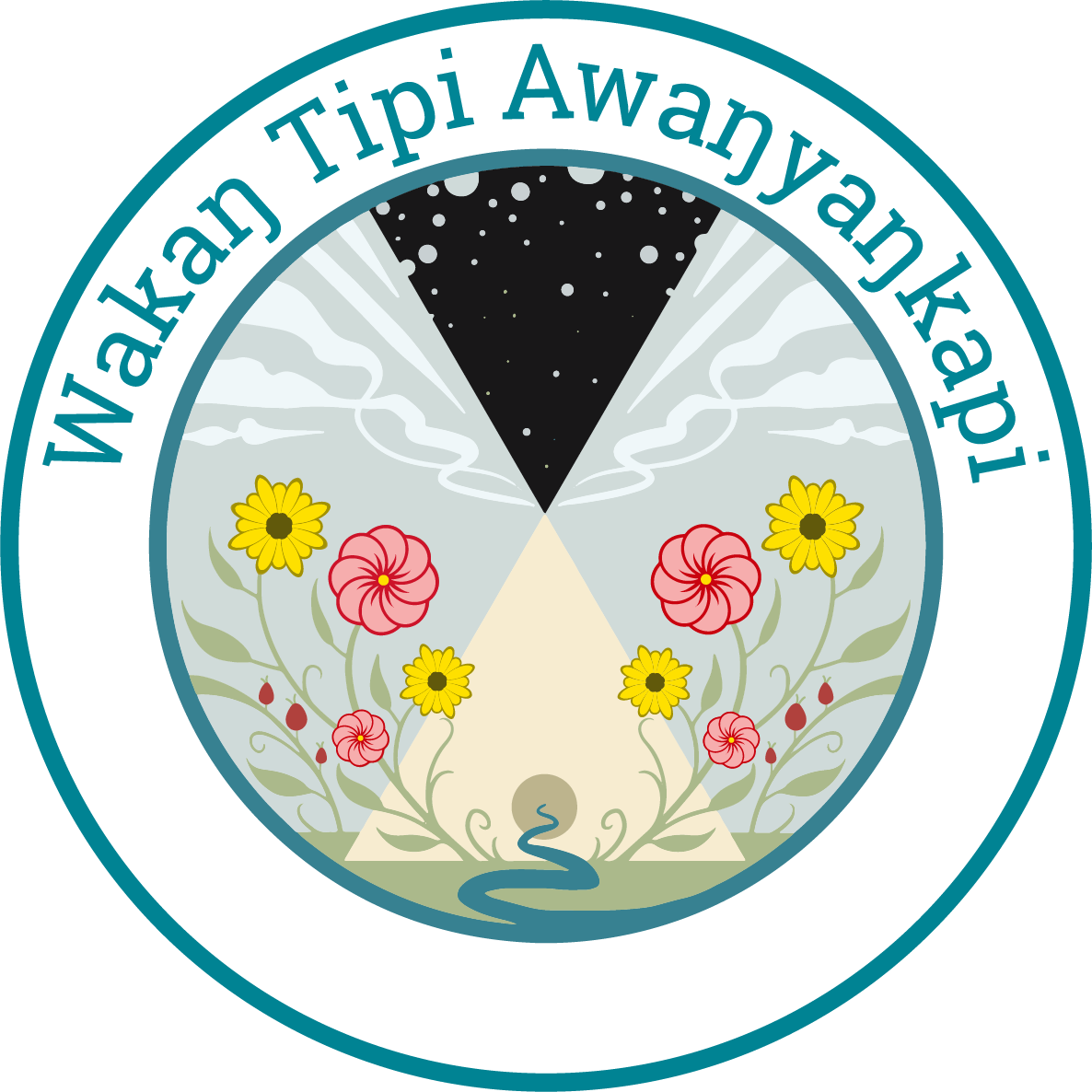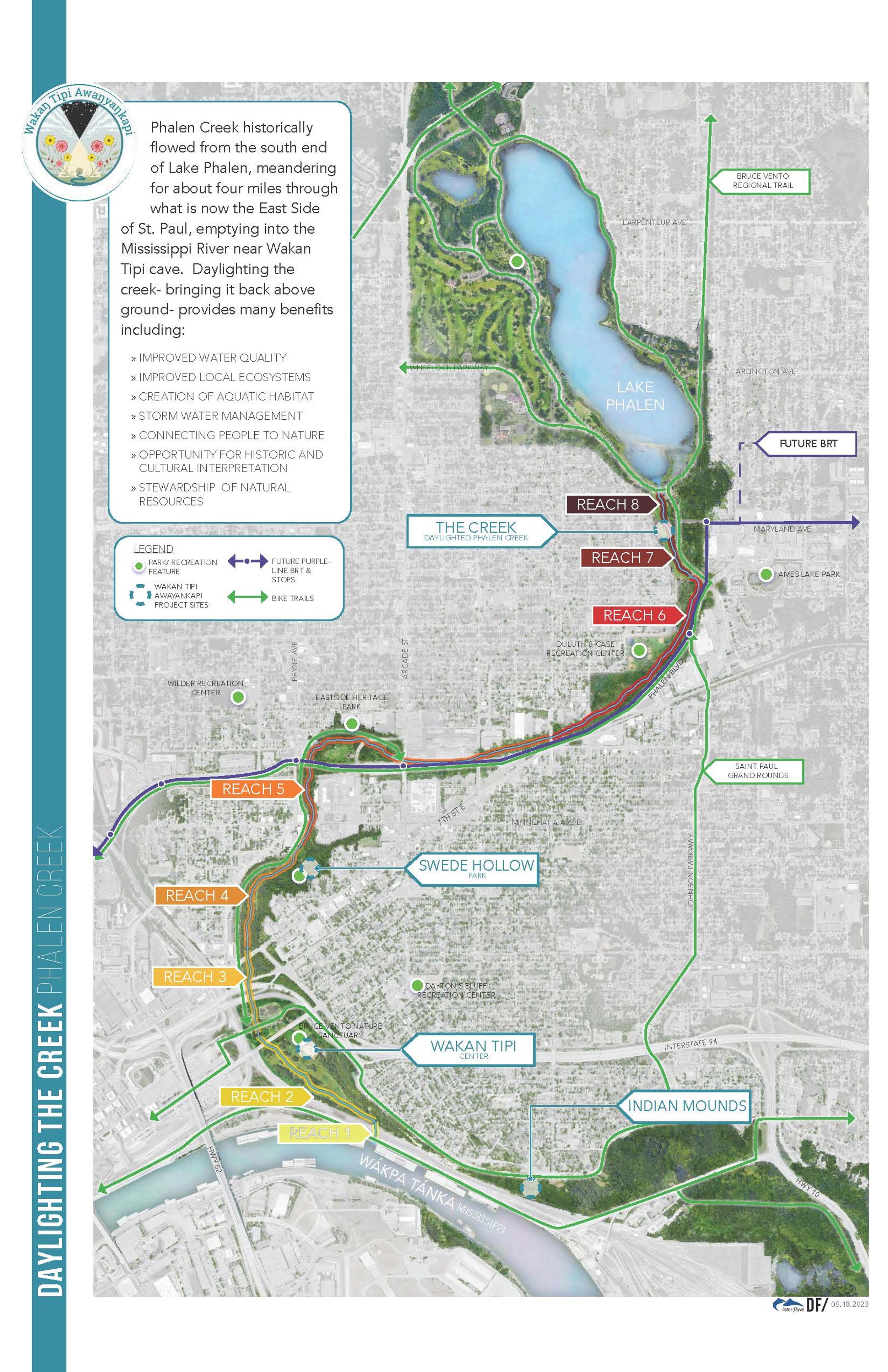check out the renderings that our partners at Damon Farber created - let us know what you would like to see in the creek design by filling out this survey!
Click here to see the daylighting Phalen Creek renderings
Want to stay updated on this project? Click here to sign up for email updates
Daylighting Phalen Creek
Our organization started as an effort by Friends of Swede Hollow after members of the community began to learn about the history of the creek and surrounding neighborhoods. In 1997, Lower Phalen Creek Project came to fruition with the intent to educate and advocate for Phalen Creek. In 2011, LPCP gained 501c3 status as a non-profit, and in 2019, a feasibility study was completed with Inter-Fluve, Inc detailing a path to daylight the creek.
Wakan Tipi Awanyankapi (WTA) is restoring the creek by “daylighting” or bringing it back above ground (see map of proposed creek corridor below). Given current development and climate conditions, there isn’t enough room to bring the creek system back to the surface as a continuous corridor. Currently, it is projected that some portions of the creek will have to be piped due to conflicts with existing infrastructure, slopes, etc. However, the goal is to daylight as much of the creek length as possible. The current pipe will remain in place to carry high flows and stormwater runoff.
Our goal is to restore native aquatic, riparian, and upland ecosystems and habitats along the corridor and plan to incorporate public access and recreation opportunities. Currently, we are focusing on the first two reaches (Phase 1) are being designed, and planning work has been initiated for the next two reaches downstream (Reaches 5&6). The stream banks would be restored and stabilized, native ecosystems such as riparian and upland prairie habitat will be restored along the corridor, and public access amenities, such as a trail, mowed gathering spaces, benches or other seating are also possible.
Our organization has been committed to community engagement throughout the daylighting project process. Early community engagement focused on educating the public on the history of the creek and the idea of daylighting the creek. During the Swede Hollow Master Plan outreach, our organization helped conduct community surveys on the community’s interest in daylighting the creek. Other community events such as Flower Power and Go with the Flow! brought community together in different ways to learn and show support for the creek.
-
Phalen Creek historically flowed out of the south end of Lake Phalen, meandering through what is now the East Side of St. Paul for approximately four miles, flowing through Bruce Vento Nature Sanctuary, and emptying into the Mississippi River near Wakan Tipi cave. This creek served as a corridor for the Dakota people who lived here, traveling from the Wakpa Tanka (Mississippi River) up the chain of lakes by canoe to Bde Mato Ska (White Bear Lake) - one of many areas where they gathered psin (wild rice). This waterway also nurtured newly immigrated Swedish, Italian, Polish, and Mexican communities who made their homes in Swede Hollow.
By the 1930’s, the creek was directed into a large underground storm pipe to make way for housing and other development. As a result, riparian, wetland, and aquatic habitat were lost, along with adjacent upland prairie and oak savanna habitats. With the loss of habitat came the loss of many traditional food sources and medicinal plants, as well as wildlife including pollinators, migratory birds and wetland species.
Canoeing Phalen Creek, Approx 1910 - Minnesota Historical Society
Phalen Creek pipe, July 1936 - Minnesota Historical Society
Funders
Funding for this project was provided from the Outdoor Heritage Fund as appropriated by the Minnesota State Legislature and recommended by the Lessard-Sams Outdoor Heritage Council (LSOHC) to restore, protect, and enhance Minnesota's wetlands, prairies, forests, and habitat for fish, game, and wildlife.
We have also received funding from the McNeely Foundation, Mortenson Family Foundation, and the Cottonwood Foundation.
Partners
Current Design of Phase 1
Our landscape design partners at Damon Farber created concept renderings to help visualize what the creek may look like once it is brought back to the surface for the first quarter mile of this project.
Here are some examples of possible amenities and landscape features that could be included in the final design:
Feel free to fill out the community survey and help us design the creek!
Why Daylight?
· To reconnect with water and nature
· To bring back natural ecosystems and habitats for
o Aquatic wildlife
o Semiaquatic wildlife
o Migratory birds
o Pollinators and insects
We Want it Back: Flower Power @ Phalen Creek event held in partnership with Oyate Hotanin on September 5, 2020
· To reconnect with medicinal plants and traditional foods
· For environmental, cultural and historical interpretation and education
· To promote community and environmental stewardship
· For localized stormwater and water quality management
-
What about construction?
We will have information on construction impacts and timeframe once we have a complete design for the creek. Please check back in at the end of the design phase around summer of 2024.
How can I get involved?
The community will get a chance to support this project in a number of different ways. 1) through involvement and conversation about the design of the creek (i.e. surveys & community engagement events); 2) through the initial phases of restoration (i.e. plantings, seedings); and 3) through long-term monitoring and maintenance of the creek and surrounding restored habitat.
Why are you starting upstream at Phase 1?
We are starting at the source of the water so that the constructed creek sections will have flowing water that will be able to support creek function and native habitats while the rest of the corridor is being planned, designed, and constructed. At each stage, the downstream end of the daylight creek will tie into the existing storm pipe.
What about the rest of the creek?
Right now WTA is focusing our time and effort on daylighting this first quarter mile (Phase 1). This is a large and long-term project with lots of different stakeholders and communities involved, but the ultimate goal is to see a continuous daylit creek running from Lake Phalen to the Mississippi River!
Will this project help improve water quality?
Streams provide a natural filtering and pollutant uptake capacity. The meanders in the stream will provide areas for sediment to settle, as well as native plantings which can provide a small degree of filtration and bioremediation. The water source will be mostly water from the surface of Lake Phalen. This will be a creek in an urban system, so it is subject to any issues that Lake Phalen experiences. Pollutant runoff from adjacent neighborhoods as well as urban trash are expected. As a member of the community, you can do your part in helping keep the creek, and any waterway, healthy and clean by picking up trash and reducing your winter salt use in your neighborhood.
Will there be animals?
The creek system, including road crossings, will be designed to support habitat for native species and to encourage native species passage. We anticipate seeing fish, frogs, aquatic insects, birds, pollinators and other species using the restored creek. Aquatic and riparian native vegetation will also be present.














